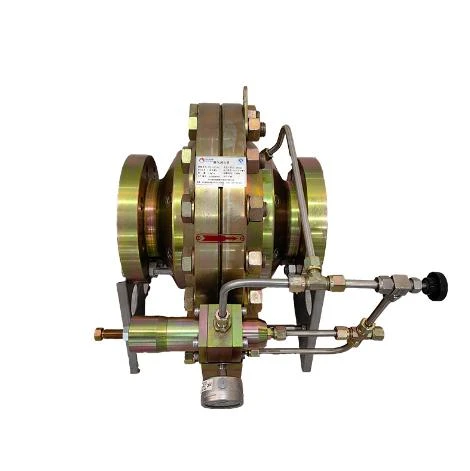
Dec . 18, 2024 06:05
Back to list
Optimizing Efficiency in Heat Exchanger Design and Application for Energy Sustainability
Understanding Heat Exchangers Principles and Applications
Heat exchangers play a crucial role in various industrial processes, HVAC systems, and even in everyday appliances. Their primary function is to transfer heat from one fluid to another without mixing them. This article delves into the principles, types, applications, and importance of heat exchangers in modern society.
Principles of Heat Exchangers
At its core, a heat exchanger operates on the principle of heat transfer, which occurs due to a temperature difference between two fluids. The process can be described using the basic laws of thermodynamics, particularly the conservation of energy. When a hotter fluid flows next to a cooler one, heat naturally flows from the hot to the cold fluid until thermal equilibrium is reached, forming the foundation for heat exchanger design.
Heat transfer occurs via conduction in the solid walls of the heat exchanger and convection in the fluids. There are two primary modes of heat transfer sensible heat transfer (temperature change without phase change) and latent heat transfer (involving phase changes, such as vapor to liquid).
Types of Heat Exchangers
Heat exchangers are available in various designs and configurations, tailored to specific applications and operational conditions. Some of the most common types include
1. Shell and Tube Heat Exchangers These consist of a series of tubes, one set carrying the hot fluid and the other the cold fluid. They are widely used in refineries and chemical processes due to their high heat transfer efficiency and ability to handle high pressures.
2. Plate Heat Exchangers Comprising thin plates stacked together, these exchangers facilitate a large surface area for heat transfer in a compact design. They are often used in food processing and HVAC applications.
3. Air-Cooled Heat Exchangers These utilize ambient air to cool fluids, making them popular in power plants and refrigeration systems. Their primary advantage is low water usage.
4. Double-Pipe Heat Exchangers This simple design features one pipe nested within another, with fluids flowing in opposite directions. They are suited for smaller heat transfer applications.
5. Spiral Heat Exchangers These are designed with fluids flowing in a spiral channel, enhancing heat transfer through increased surface area and turbulence, ideal for viscous fluids or sludge.
Applications of Heat Exchangers
heat exchanger

Heat exchangers are indispensable across several sectors, including
- Power Generation They are crucial in condensing steam back into water in thermal power plants, optimizing efficiency and energy recovery.
- Chemical Processing In petrochemical plants, heat exchangers help recover heat from exothermic reactions, improving overall process efficiency
.- HVAC Systems These systems integrate heat exchangers to regulate indoor climate while conserving energy by recycling heat.
- Food and Beverage Industry Pasteurization processes utilize plate heat exchangers to ensure food safety while minimizing nutrient loss.
- Automotive Heat exchangers in cars manage engine temperatures and improve fuel efficiency, critical for environmental standards.
Importance of Heat Exchangers
The significance of heat exchangers extends beyond mere temperature regulation. They contribute to energy conservation, reducing operational costs and minimizing environmental impact. By reclaiming waste heat, industries can enhance efficiency and reduce their carbon footprint.
The efficiency of a heat exchanger is measured by its effectiveness, which indicates how well it transfers heat compared to the maximum possible transfer. A high-efficiency heat exchanger can significantly reduce energy consumption, leading to cost savings and sustainability in energy usage.
Moreover, advancements in materials and technology have allowed for the development of highly efficient and compact heat exchangers that can withstand extreme temperatures and pressures. Research is ongoing to improve heat transfer fluids and optimize configurations, promising even greater efficiency and effectiveness in future applications.
Conclusion
Heat exchangers are vital components in a wide array of applications, contributing significantly to energy efficiency and environmental sustainability. By continuously evolving and adapting to new technologies, the role of heat exchangers will only expand, further integrating them into our energy-sustaining strategies and practices. Understanding their operation and importance not only enhances industrial processes but also promotes a more sustainable future. As society continues to seek efficient energy solutions, heat exchangers will undoubtedly remain at the forefront of technological innovation.
Next:
Latest news
-
Safety Valve Spring-Loaded Design Overpressure ProtectionNewsJul.25,2025
-
Precision Voltage Regulator AC5 Accuracy Grade PerformanceNewsJul.25,2025
-
Natural Gas Pressure Regulating Skid Industrial Pipeline ApplicationsNewsJul.25,2025
-
Natural Gas Filter Stainless Steel Mesh Element DesignNewsJul.25,2025
-
Gas Pressure Regulator Valve Direct-Acting Spring-Loaded DesignNewsJul.25,2025
-
Decompression Equipment Multi-Stage Heat Exchange System DesignNewsJul.25,2025

